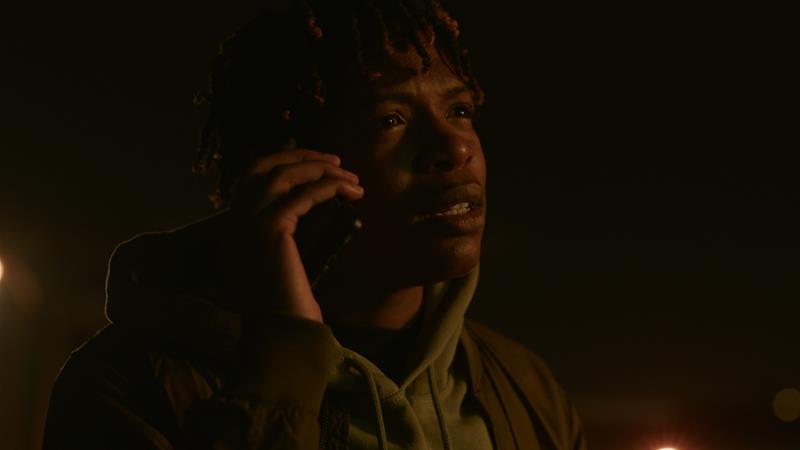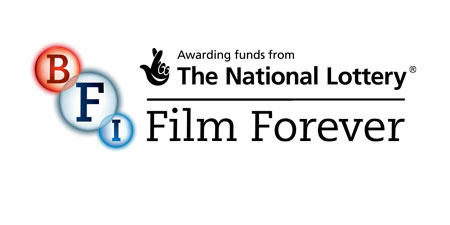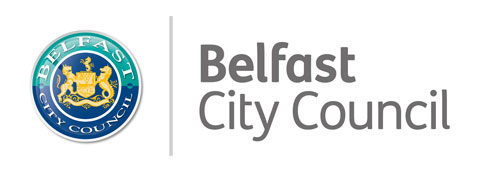LUMI Interviews: Karimah Zakia Issa (Part 1)
26 February 2024
LUMI Programmers Katherine Harris and Leeza Isaeva interview filmmaker Karimah Zakia Issa about her Iris Prize winning short film, Scaring Women at Night.

Scaring Women At Night opens with a familiar situation: it’s dark and it’s late, and a woman worries that the shadowy male figure behind her is following her. She is on the phone to a friend, and so the three pieces of Karimah Zakia Issa’s short film are set in motion.
The man is Ash. Having transitioned, he understands the fear that Ella, the woman, is feeling, whilst working through the feeling of being perceived as a threat. Issa’s film artfully explores the nuances of transition, queer experience, and how the perceptions of others shape your understanding of yourself – something that each of the three characters will experience.
LUMI: Scaring Women At Night was adapted from a short story. What was the process of adapting this story from a textual to a visual work?
Karimah: It was adapted from a short story by Ace Clamber, who is a phenomenal writer and also my childhood best friend. He would send me stories that he would write for fun. This one wasn’t written yet. This is something that he had told me about – it wasn’t a one-to-one experience with his life, but generally noticing that his interactions with women changed, and specifically walking at night. I asked him if he could write a short story about it, and so he wrote a great short story.
Throughout the whole creation of the film, because it is his story and so personal to him, it was important that he was always the north star in how the adaptation was going. I led writing the screenplay, and we would collaborate on changes and making sure that it felt right, and what things for him were essential that needed to stay. We wanted to find a way to incorporate his beautiful writing, so most of what Ash, the main character, is saying, is from the story itself. So we figured out what key components needed to stay, and what needed to shift and evolve to dramatise it visually, and to create context and a story that wasn’t only reflective and a poetic narrative, but can also be more dramatised.
I don’t think he wrote the end of the story. That’s something that we developed to conclude the film and arc it out. We would have a lot of conversations about how to get to this point and not lose the essence of what his original story was. We didn’t want to make things that were completely re-traumatising. A lot of projects of the time were really focused on trauma of trans folks, and of many marginalised communities, and we wanted something that felt a bit more dynamic.
The film considers a specific, nuanced facet of trans experience that doesn’t often receive attention. How you can be grateful for a particular, life-saving experience, and still understand that you are leaving something behind through transitioning. What would you consider the essence of that original story that you wanted to maintain?
Based on the society that we live in, there are inherently things that you leave behind and that you still long for, and it’s not wrong to long for those connections. It’s not a clean line. You don’t just enter this new world and suggest that everything that you had before was awful. That realisation that people perceive you differently just because you present in a different way, and you acquire this weight of – in this case – what it means to be a man in our world, and you acquire a lot of assumptions that don’t belong to you, but you have to bear them. It’s the journey of understanding that you needed to do something to feel complete and like yourself, but it doesn’t come without its innate complications. We wanted to maintain this idea that the way the world perceives you influences how you move through the world, regardless of what you’ve actually brought to the table. We weren’t trying to create a solution or anything like that, it was just highlighting a fact.
I attended the Iris Prize and watched the film in person. What is the significance of queer networks like the Iris Prize in your practice as a filmmaker?
I exist at many intersections, socially. I like to make things that can be appreciated by a really wide range of people, that gives an in to many people, but it is also really cool to share it with the people it was made by and made specifically for. There’s always two appeals to the projects that I hope to make. One is really ‘for you’, because it’s for me, in a way where we have that similarity that connects us. It’s really cool to share it in those spaces.
What’s been great is also to screen it at festivals that aren’t specifically queer, or black, and to still have folks from the community be in that space and be like ‘hey, this spoke to me so specifically’, and so that was really exciting. There’s just a different level of understanding to be in that space in a room and to look around and to just really feel like you’re completely surrounded by a specific part of a community that you belong to – it’s cool.
There are all these people that I’ve met who are incredibly talented, who have their own perspectives, and to see how varied within those contexts those perspectives are. To be able to watch all these other films and still be able to pick up new things. It’s a good reminder that we have these similarities and a commonality in our walks of life but they are still very different, and there’s still so much to discover.
How does queerness, inclusivity, and liberation work within your broader filmmaking practice?
When I think about filmmaking, I definitely think about it from A-Z in the sense of who am I working with before we even have a shoot day, before we have a story. Who’s in the room, who’s part of the team, who am I having conversations with, who am I sharing the script with? It’s important to have a variety of different kinds of people. For me – I’m black, I’m queer, I’m a woman – for any parts of those I would never want to hear from only ‘these kinds’ of people in regards to the story. I think it’s important to have a well-rounded network from early on.
Of course Scaring Women At Night is specifically a trans film, but it also deals with these really human topics. It deals with connection and belonging and change and survival. I think having that baseline for me is always really important. It’s almost like you can take many people from many backgrounds and insert them into a story, and it will be a different story, but there can be an essence that remains because there is a human baseline. It’s just a human emotion, or feeling, or experience. And then their personal lived experience will influence certain details.




